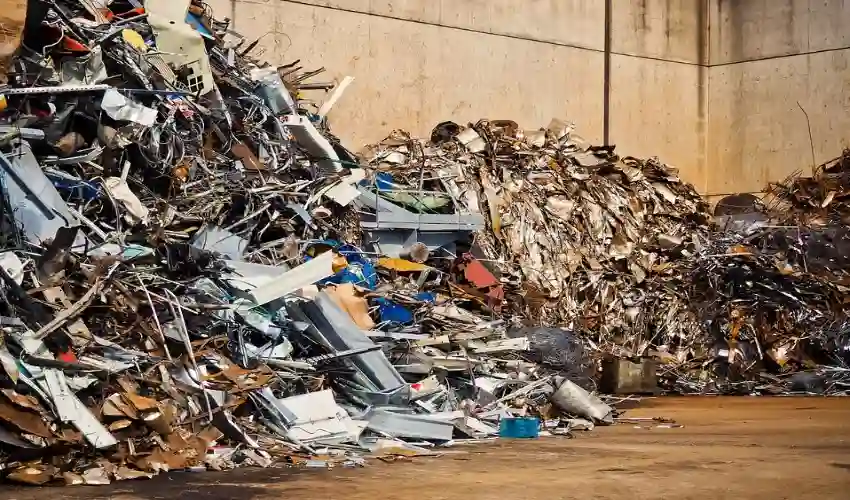Scrap steel is a vital component of the global metal industry, playing a crucial role in sustainable manufacturing and resource conservation. It refers to recycled steel obtained from discarded metal products, industrial waste, and demolished structures. This material is reprocessed to produce new steel, reducing the need for virgin raw materials and minimizing environmental impact. In this article, we will explore what scrap steel is, its sources, benefits, and why it holds significant importance in today’s world.
Understanding Scrap Steel
Scrap steel consists of used or discarded steel that is collected, sorted, and melted down for reuse. It can come from various sources, including household appliances, construction debris, automobiles, machinery, and manufacturing remnants. There are two primary types of Scrap Steel For Sale:
- Obsolete Scrap: Steel products that have reached the end of their useful life, such as old vehicles, bridges, and consumer goods.
- Prompt Scrap: Excess steel generated during the manufacturing process, including cuttings, trimmings, and factory offcuts.
Sources of Scrap Steel
Scrap steel is gathered from multiple sectors, ensuring a continuous supply for recycling. The major sources include:
- Construction and Demolition: Buildings, bridges, and infrastructure projects produce significant amounts of scrap steel when dismantled.
- Automotive Industry: End-of-life vehicles provide a rich source of steel from car bodies, engines, and frames.
- Manufacturing Plants: Factories generate scrap during production, such as metal shavings and offcuts.
- Household and Consumer Goods: Discarded appliances, tools, and furniture contribute to the scrap steel supply.
- Shipbreaking Yards: Decommissioned ships are dismantled to recover large quantities of steel.
The Recycling Process of Scrap Steel
The recycling of scrap steel involves several steps to ensure quality and usability. The process includes:
- Collection and Sorting: Scrap steel is gathered and categorized based on type and quality.
- Processing and Shredding: Large steel pieces are cut or shredded into smaller fragments for easier melting.
- Melting: The steel is melted in furnaces at high temperatures.
- Purification and Refining: Impurities are removed to produce high-quality steel.
- Solidification and Reformation: The purified steel is cast into new shapes, such as sheets, bars, or coils, for use in various industries.
Importance of Scrap Steel
Scrap steel is essential for numerous reasons, including environmental sustainability, economic benefits, and energy efficiency.
1. Environmental Benefits
- Reduces Landfill Waste: Recycling steel prevents excessive waste accumulation in landfills.
- Lowers Carbon Emissions: Producing steel from scrap reduces greenhouse gas emissions compared to virgin steel production.
- Conserves Natural Resources: Using scrap minimizes the need for iron ore, coal, and limestone mining, preserving natural resources.
2. Economic Advantages
- Cost-Effective: Scrap steel is more affordable than virgin steel, reducing manufacturing costs.
- Job Creation: The recycling industry supports employment in collection, processing, and transportation.
- Boosts the Economy: Scrap metal trade contributes significantly to local and global economies.
3. Energy Efficiency
- Recycling scrap steel consumes up to 74% less energy compared to producing new steel from raw materials.
- It reduces reliance on fossil fuels, lowering operational costs for steel manufacturers.
Industries That Rely on Scrap Steel
Many industries depend on recycled steel for their operations, including:
- Construction: Buildings, bridges, and infrastructure projects use recycled steel in beams, reinforcements, and pipes.
- Automotive: Car manufacturers incorporate recycled steel into vehicle frames and components.
- Appliances: Washing machines, refrigerators, and ovens are often made from recycled steel.
- Aerospace: Aircraft production utilizes high-quality recycled steel for structural integrity.
- Packaging: Canned goods and food packaging frequently contain recycled steel.
The Future of Scrap Steel Recycling
With increasing awareness of environmental sustainability and resource conservation, the demand for scrap steel is expected to rise. Advancements in recycling technology, stricter environmental regulations, and growing industrial needs will drive further innovations in steel recycling processes. Governments and businesses worldwide are promoting circular economy practices, ensuring that scrap steel remains a key player in global sustainability efforts.
Conclusion
Scrap steel is an indispensable resource that contributes to environmental protection, economic growth, and energy efficiency. By recycling steel, industries can reduce waste, conserve raw materials, and lower production costs. As the world moves towards a greener future, the importance of scrap steel will continue to grow, making it a crucial element in sustainable development.
